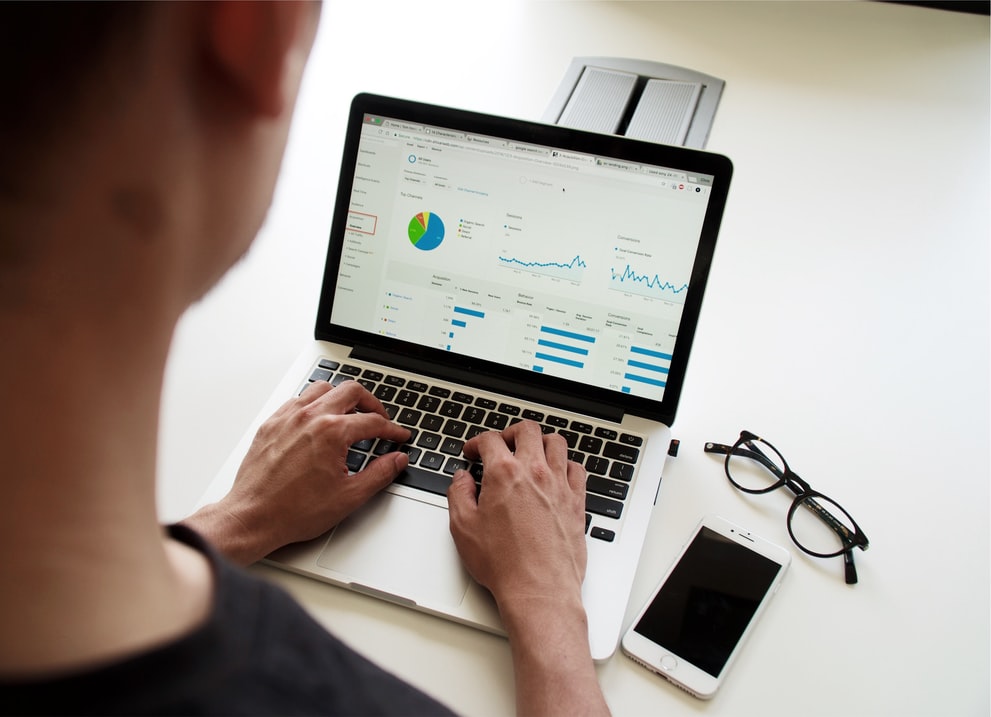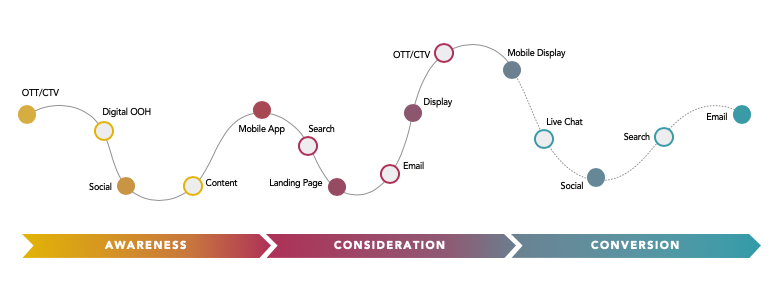It’s estimated that less than 10% of consumers are brand loyal and of the millennial generation – whose purchasing power will hit $1.4 trillion this year – only 1 in 5 are self-described brand loyalists. In an age where brand loyalty seems like a thing of the past, connecting with consumers effectively is more important than ever.
Adding to the already complicated brand and consumer relationship, consumers now spend more time across different platforms than ever before. It’s no longer a world of in-store shopping. Consumers want to buy online, buy in-person, engage with brands on social media, share product reviews, chat with an online representative, buy online and pick up in person, and even buy in-person and have it shipped to their home. Every consumer’s journey and preferences are different and as advertisers, it can be daunting to try and find the best path forward.
Luckily for brands, digital advertising technology poses new opportunities to interact with customers across multiple channels, track interactions and purchases, and build better in-store and online shopping experiences. Enter the benefits of omnichannel marketing.
But first, what exactly is omnichannel marketing?
Omnichannel marketing is an approach to marketing that addresses the customer experience on each channel – desktop browser, mobile, retail, social media, podcast, and any others you might use – and how customers transition between each channel as they make purchases.
So, what are 5 omnichannel marketing benefits?
1.Reach Consumers Where They Already Are
As mentioned above, where consumers spend time shopping, interacting, and learning about new brands is varied and constantly changing. If you’re siloing your digital marketing budget to one channel, you’ll miss out on consumers who are spending their time elsewhere.
2. Better Consumer Insights
Even if you are taking advantage of multiple digital advertising channels, without an omnichannel marketing solution in place, you may be missing out on key insights about your consumers. Tracking a consumer from an initial point of content, through various touchpoints along the way, all the way through to point of purchase (in-store or online) is one of the biggest omnichannel marketing benefits. With this data and insight, you may find that certain messaging, time of day, channels, or offers resonate better with your audience – leading to more sales. Having this 360-degree view of your consumers will allow you to better target your consumers for future campaigns, leading to an overall higher ROI.
3. More Strategic Ad Targeting
We’ve all experienced this scenario. One day you buy a product online and the next day (or hour) you’re served an ad for a product you already purchased. It’s frustrating for consumers, but for advertisers, it’s wasted media spend. With an omnichannel marketing solution in place, you can better target consumers based on their intent – across all channels. That consumer that just purchased a desk for their home office now its time to move to upselling or cross-selling. Maybe they’re interested in a new office chair to go along with the deck they just purchased? Maybe they’ve been thinking about upgrading their dining room chairs too and just need the extra push? Maybe test a few different ads using dynamic creative optimization or DCO? After a purchase is made is the perfect time to keep interacting with consumers – it can drive incremental sales and brand loyalty.
4. Changes Made Quickly
One of the biggest omnichannel marketing benefits is through the analysis of consumer insights, you’ll know which channels are working the best at a given period of time. Maybe your Google ads are performing better based on the specific KPI of the campaign, you can easily switch budget from your Facebook ads to Google to optimize the success you’re seeing on that channel. With Digilant’s rapid response capabilities, you can quickly swap in and out creatives across display and social to ensure you’re getting the biggest bang for your buck.
5. Cost Efficiency
Let’s say your consumer has been having great interactions with your brand via video ads, browsing online, and even chatting with an online representative about a few questions they have. Over the weekend, they go into their local store and make a purchase. Seems like the perfect scenario. However, without an omnichannel marketing solution in place, you’ll miss that transaction. Without knowing that this consumer made a purchase, you’ll continue to target and interact with them with untimely ads (see #3). Setting up an omnichannel solution will allow for a full in-store and online picture of the consumer journey – diminishing the risk of missed opportunities to drive additional sales.
How do I get started?
Figuring out where to get started with navigating the different channels, tactics, and data of omnichannel marketing can feel overwhelming. Finding a strategic digital advertising partner with experience and expertise across these channels is essential. At Digilant, we start with consumer research to define the target audience, which leads to the development of an integrated media strategy and sets the stage for campaign analysis and measurable performance. We understand what an omnichannel marketing strategy requires and our team of flexible and agile experts are ready to help. Let’s talk.
Interested in learning more about omnichannel marketing? Read about how custom omnichannel marketing analytics can make or break a campaign here.








